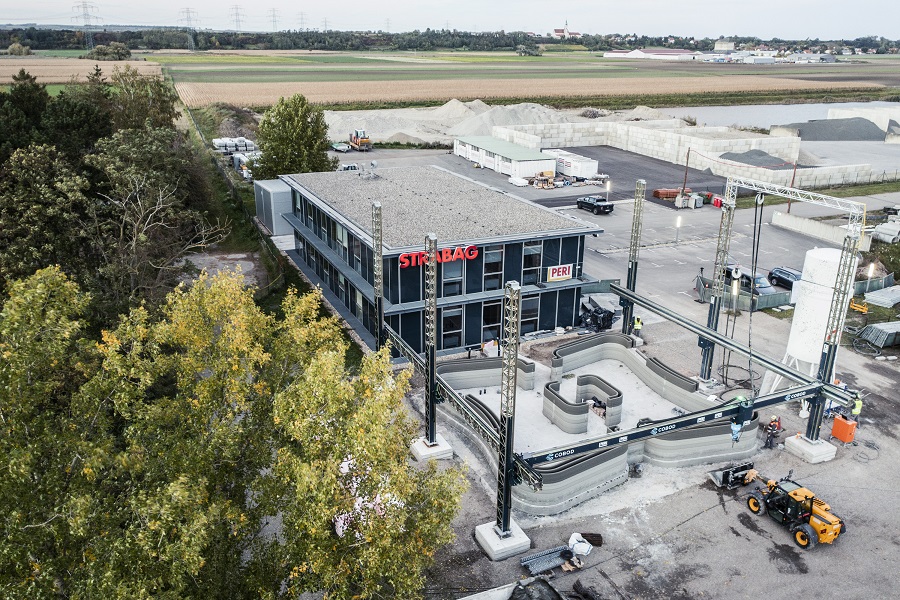
Construction technology group Strabag and Peri, a formwork and scaffolding manufacturer and provider of 3D concrete printing technology, partnered to build the 125m² office building next to Strabag's asphalt mixing plant in Hausleiten. The special dry mortar for the construction 3D printing project, with long workability and good pumpability, is being supplied by Lafarge.
“3D concrete printing gives the construction industry an important boost of innovation and represents an exciting addition to the range of available construction methods," says Klemens Haselsteiner, the Strabag member of the management board responsible for digitalisation and innovation. "With this practical test, we want to further develop the technology of 3D concrete printing together with our partners PERI and Lafarge. The joint planning and design for Hausleiten has already yielded some important insights for the future."
Peri director of innovation & marketing Thomas Imbacher said that just under a year ago the company had printed Germany’s first residential building using a BOD2 printer from its Danish partner COBOD. "Since then, the Peri team has successfully realised several additional printing projects," he added.
The partners says that construction 3D printing offers several advantages where its use makes technical and financial sense. The COBOD BOD2 gantry printer used in Hausleiten can print concrete at up to one metre per second, which significantly shortens the construction time. The structural works for the building in Hausleiten can be completed in around 45 hours of pure printing time. Construction 3D printing is also said to offer significantly more design freedom compared to classic concrete construction, with the possibility of easily creating architecturally complex rounded designs.
“3D-printed buildings will help to establish a new, digitally and environmentally advanced language for concrete,” says Berthold Kren, CEO of Lafarge Austria. "The intelligent material is convincing in its application and provides a high degree of architectural freedom in design. It allows us to build more with less."
Thomas Birtel, CEO of STRABAG, says that currently 3D printing is only suitable for construction projects up to a certain size, so having a skilled workforce remains crucial for the successful realisation of construction projects.
“The severe shortage of skilled labour that currently prevails will remain with us in the future as a challenge that we have to cushion with two strategies: by investing in training, for example with our new Strabag Camp[us] Ybbs, and by increasing productivity with new technologies,” Birtel says.














